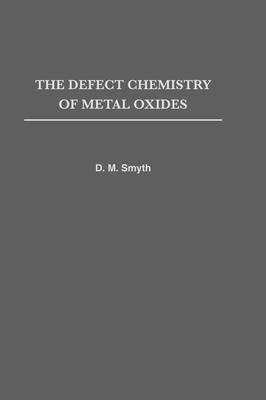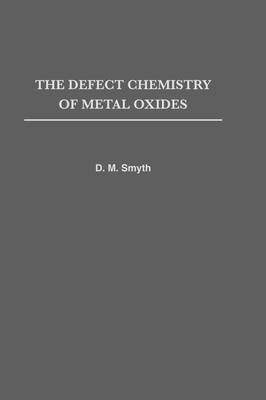
- Afhalen na 1 uur in een winkel met voorraad
- Gratis thuislevering in België vanaf € 30
- Ruim aanbod met 7 miljoen producten
- Afhalen na 1 uur in een winkel met voorraad
- Gratis thuislevering in België vanaf € 30
- Ruim aanbod met 7 miljoen producten
Zoeken
Omschrijving
The Defect Chemistry of Metal Oxides is a unique introduction to the equilibrium chemistry of solid inorganic compounds with a focus on metal oxides. Accessible to students with little or no background in defect chemistry, it explains how to apply basic principles and interpret the related behavior of materials. Topics discussed include lattice and electronic defects, doping effects, nonstoichiometry, and mass and charge transport. The text distinctly emphasizes the correlation between the general chemical properties of the constituent elements and the defect chemistry and transport properties of their compounds. It covers the types of defects formed, the effects of dopants, the amount and direction of nonstoichiometry, the depths of acceptor and donor levels, and more. Concluding chapters present up-to-date and detailed analyses of three systems: titanium dioxide, cobalt oxide and nickel oxide, and barium titanate. The Defect Chemistry of Metal Oxides is the only book of its kind that incorporates sample problems for students to solve. Suitable for a variety of courses in materials science and engineering, chemistry, and geochemistry, it also serves as a valuable reference for researchers and instructors.
Specificaties
Betrokkenen
- Auteur(s):
- Uitgeverij:
Inhoud
- Aantal bladzijden:
- 304
- Taal:
- Engels
- Reeks:
Eigenschappen
- Productcode (EAN):
- 9780195110142
- Verschijningsdatum:
- 15/06/2000
- Uitvoering:
- Hardcover
- Formaat:
- Genaaid
- Afmetingen:
- 187 mm x 263 mm
- Gewicht:
- 716 g

Alleen bij Standaard Boekhandel
+ 912 punten op je klantenkaart van Standaard Boekhandel
Beoordelingen
We publiceren alleen reviews die voldoen aan de voorwaarden voor reviews. Bekijk onze voorwaarden voor reviews.











